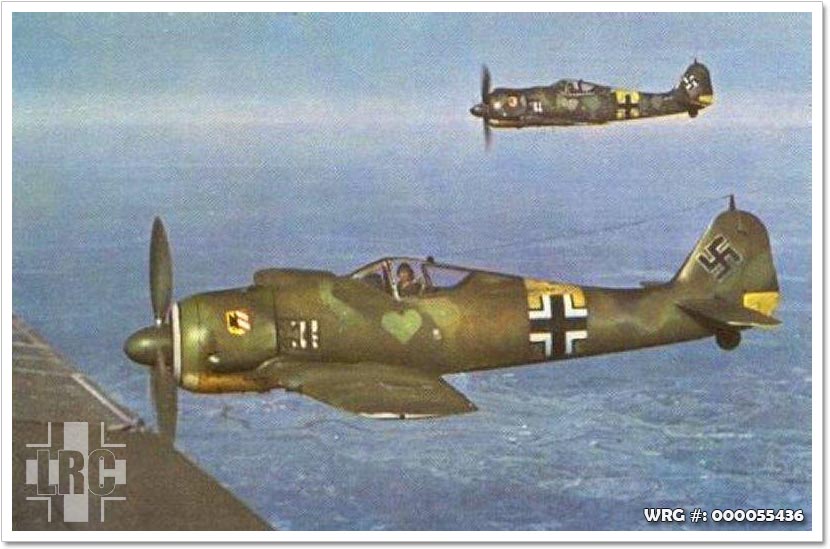Focke Wulf Fw 190
Operational History:
Fall Blau to Third Battle of Kharkov
The first appearance of the Fw 190 on the Eastern Front occurred in September 1942. During this time, the Battle
of Stalingrad was taking place, which would eventually lead to the destruction of the German Sixth Army. The
first German unit to receive the fighter in the east, was Jagdgeschwader 51 (JG 51). However, its I. Gruppe was
assigned to the north sector, and undertook operations against the Soviets during the Siege of Leningrad in
order to allow the Fw 190 to acclimatise. The unit flew free fighter sweeps (Freie Jagd). This lasted only
days, and I./JG 51 moved southward to Lake Ilmen to provide air cover for the vulnerable Demyansk pocket
survivors. In October 1942 the unit moved south again, this time the Rzhev-Vyazma salient. It was at this
location the Fw 190 started to make an impact.
On 10 December the first loss was taken, when Hauptmann (Captain) Horst Riemann was killed in action. Others
were also shot down owing to anti-aircraft fire whilst escorting German bomber and transport aircraft dropping
in supplies. Pilots that had not obtained relevant results while flying the Bf 109 now increased their scores
with the Fw 190. Günther Schack would score a large percentage of his 174 victories on the Fw 190, including
88 Ilyushin Il-2 Sturmoviks. Josef Jennewein scored 86 victories. His tally increased markedly only after he
converted on to the Fw 190. In December 1942, Jagdgeschwader 54 (JG 54) also began converting on to the
Fw 190. I./JG 54 would produce the fourth and fifth highest scoring aces of the war. Otto Kittel had scored
just 39 victories since the start of Operation Barbarossa, in June 1941. The other was Walter Nowotny.
Although he had claimed more than 50 kills on the Bf 109, his success in the Fw 190 would see his score
rise to 258. Kittel would also go on to achieve 267 victories, all but 39 in the Fw 190.

Focke-Wulf Fw-190A-6 of JG54, 1944.
Sources:
Gunston, Bill - The Encyclodepia of the Worlds Combat aircraft, 1976, Chartwell Books, Inc., New York
Brown, Eric, Captain - Wings of the Luftwaffe , 1979, Airlife Publishing Ltd., Shrewsbury
, 1979, Airlife Publishing Ltd., Shrewsbury
Gunston, Bill & Wood, Tony - Hitler's Luftwaffe , 1977, Salamander
Books Ltd., London
, 1977, Salamander
Books Ltd., London
Donald, David - The Complete Encyclopedia Of World Aircraft, 1997, Brown Packaging Books Ltd., London
Wikipedia - Fw 190
Gunston, Bill - The Encyclodepia of the Worlds Combat aircraft, 1976, Chartwell Books, Inc., New York
Brown, Eric, Captain - Wings of the Luftwaffe
Gunston, Bill & Wood, Tony - Hitler's Luftwaffe
Donald, David - The Complete Encyclopedia Of World Aircraft, 1997, Brown Packaging Books Ltd., London
Wikipedia - Fw 190






